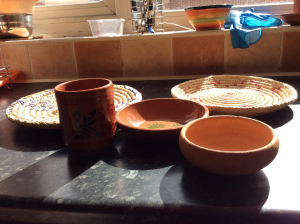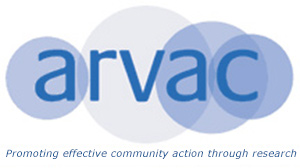 We are using artistic methodologies to explore Muslim women’s layered experience of identity in Rotherham. We are exploring ways in which artistic methodologies can support community-led research with a focus on the life trajectories of women from Pakistani heritage backgrounds. Community co-investigator, Zanib Rasool, is using poetry and other artistic methodologies to connect family histories, creating a sense of being between generations. Through arts based practice we are capturing individuals’ unique stories across three generations. The project gives the deserved recognition to the contribution migrant communities have made to social, cultural and economic life.
We are using artistic methodologies to explore Muslim women’s layered experience of identity in Rotherham. We are exploring ways in which artistic methodologies can support community-led research with a focus on the life trajectories of women from Pakistani heritage backgrounds. Community co-investigator, Zanib Rasool, is using poetry and other artistic methodologies to connect family histories, creating a sense of being between generations. Through arts based practice we are capturing individuals’ unique stories across three generations. The project gives the deserved recognition to the contribution migrant communities have made to social, cultural and economic life.
Taking Yourself Seriously funded by Art and Humanities Research Council explores artistic approaches to social cohesion. The Clifton girl’s project utilised artistic methodologies to gain a more meaningful and deeper insight into Muslim women’s mufti- layered experience of identity and citizenship. The current narrative discourses of Muslim women are based on stereotypes that undermine all our achievements and successes and make invisible the positive contribution that every day we make to British civic life, social and economic life. Through life story approach eight women of Pakistani heritage share their stories of the challenges and barriers they have faced as daughters of immigrants; and also their story of inner strength and resilience, challenging some of the negative assumptions made about Muslim women in policy and media, and placing Muslim women at the centre of social research and arts pedagogy.,
Artists have a social responsibility to bring untold stories to life and reposition community narratives and change the power balance through artistic methodologies to connect family histories and creating a sense of belonging for younger generations. Through arts based practice we are capturing individual women’s unique stories across three generations.
During the month of August it was 70 years since the independents of Pakistan and India which came at a cost, and those human stories of sacrifice remain untold. The ‘Others’ history being made invisible with no particular history lessons about one of the bloodiest wars taught to their children in British schools. Like the stories of our father's working in the steel industry and their contributions goes largely unrecognised.
Cohesion can only happen when people of all backgrounds and faiths have their rightful place in history and artist have a role to play in this, in capturing events and moments in history of the marginalised through visual narratives, through poetry and writing, through performing arts and making visible those invisible lives Artist can validate the lives of their ancestors and their struggles and be a voice for their community
These women who left Clifton school in the 1970's their stories would have remained untold if it was not for this project. As women we are disadvantaged by our gender and the feminist writer, Ann Oaxley rightly argues ‘women and other minority groups, above, all need qualitative research because without this, it is difficult to distinguish between personal experience and collective oppression’. (2005, p. 189). Artist and poets can get to those personal experiences.
I have been meeting with Nazia Lafit, a local artist, every week in August
Nazia- This project has given me a greater understanding of our past histories. Art and poetry help with communication with people and how people feel. Art is a way of expressing feelings and recognise the sacrifices of the older generation.
Often when we talk about cohesion we start reminiscing and during one of those moments I remember growing up in a street that reflects what social cohesion should look like with people living side by side. I write about my street.
‘The Irish, the Polish, the Italian and the Commonwealth immigrants from Pakistan living in a row of run down terrace houses, side by side in a little industrial market town.
The boys played with their multi coloured marbles on the street corners, seeing no difference between them for they were all children of migrants united in a new place.
The sounds of home echoing through the distinct languages each brought with them which we no longer hear, the multilingual voices calling the children to come in at nightfall are now silenced.
The Irish stews, Madras curries, Pierog (Polish dumplings), and Tuscan soup, the aroma of home, the recipes forgotten, no one can cook now like Ammi (mother) did.
The Sunday church bells mingled with the reading of the Quran from my house, the opera played loudly next door, Irish bagpipes in tune with Polish folk songs down the street, those sounds are getting quieter now’
The street, I grow up was like many other streets across this country in the 1970s, you did feel a sense of belonging in my street with some English families and Irish families who lived there for a long time and with new immigrant families like mine moving in. ‘A sense of belonging is a reoccurring theme in definitions of social cohesion. A sense of belonging can also be connected with identity and to identification with a geographical space. Sharing a sense of belonging or identity arguably promotes social cohesion (Holtug, 2016). However it is important to question how do we build collective and community identities without scapegoating those that are excluded from them?’ Over time in my multicultural neighbourhood like other similar neighbourhoods there was ‘white flight’ and we the minority ethnic community are made the scapegoats for living parallel lives which is unjust but then politician do not need to look at racism and high unemployment leading to migrants living in poorer areas clustered together. .
I remember as a child, in my street all the mums use to hang the washing out about same time in the morning, only for the whites to get covered with soot from the smoke from the factories on our doorstep. They also use to shout in the evenings simultaneously in different languages for the children to stop playing and come in for bed. No one had much money so friendship counted and we did not have mass media like we do today fanning the fires of intolerance and blaming immigrants for everything. In the past and even now immigrants are doing jobs that pay very little and finding the streets are not paved with gold but hostility.
Social cohesion happened more naturally then and was not forced by government policies and strategies. There was trust between neighbours whatever background they were from.
Zanib- ‘My mum use to leave me as a baby with her lodger Jean that rented a flat from my dad. Jean and her teenage daughters use to look after me while mum went and got her shopping done. There was trust then. Trust is a very big part of community cohesion and when trust breaks down, community break down and we start living parallel lives’
At our last session in August, Nazi and I talked about Pakistan about our parents’ lives there, our mothers would have been very young when they arrived here with no English, and it must have been very lonely.
We talked about objects and one of those was sewing machines, objects are good way of narrating women’s livers.
Nazia -Every women from Pakistan was talented, we had henna artist, we had women who sewed beautifully, did embroidery, knitting. Every house had a sewing machine, now hardly anyone has a sewing machine, we are losing creative skills
Nazia –Pakistan art is colourful; it is bold, symmetric patterns .and textiles. Everyday objects, cooking pots, buses and lorries. I am going to look at the work of South Asian artist. I love Islamic art. I am learning so much, I am experiencing my own culture, it’s fascinating. I am able to look back on women’s lives and their progression
Nazia and I talked about life in Pakistan and I remember when I was six I visited Pakistan for the first time in late 60s having been born in Newcastle I remember the hot summer and sleeping outside in the courtyard and counting the stars all night, it felt so peaceful.
My mother had a bed shipped from Pakistan which is now in my spare bedroom

My mother gave up sleeping under the stars on summer nights for cold, damp dismal house near the dockyards when she first arrived here in the early 1960.
Nazia This work has also made me think of my mum’s sacrifices, our mums came here to give us a better life. I think they were happier there, it was more relaxed, they had roots, and our mums lived for their kid
Objects seem to play an important role in the narrative of Pakistani women’s lives but modernity means we are losing objects and things that were once important, our cultural artefacts which provide us with past narratives of our family lives are being replaced with new objects along with our culture.
Feeling nostalgic I walked around my house and my mother’s one Sunday morning and realised in my mother’s house there were still things the linked to Pakistan and her pilgrimage to Saudi Arabia whilst I had a fridge with magnets of holidays taken in different parts of the world.

My 24 year old nephew likes eating from these clay pots sent by his maternal grandmother in Pakistan
Perhaps it is a way of keeping our ancestors close to him, something that reminds us of them and our parent’s country of origin, our roots. ‘Objects are animated with human histories, vision, and ingenuity’ (Brandt and Clinton, 2002, 345)
Artists are the people that can bring the past to life and provide us with visual images of our future. They weave a splendid web of hope that often links us with our past and takes us to our future
Nazia. We are good, when we do art, we face lots of barriers, I am more confident in my art then I was before. Before this project I did not know much about my own families’ history as artists’.
In the current political climate differences are viewed as a threat to social order. We have to be brave and cross boundaries and artist are best placed to lead the way
‘I can only speak through my art work; my ideas are generated by my passion for artistry’ (Nazia Latif conversation with Mariam Shah, Oral historian on this project, August 2016).
References
Oakley, A. (2005) Reader: Gender, Women, Social Science. Bristol. The Policy Press
Brandt, L. and Clinton, K. (2002) Limit of the local: Expanding perspectives on literacy as a social practice. Journal of Literacy Research. 34 (3) 337-356
